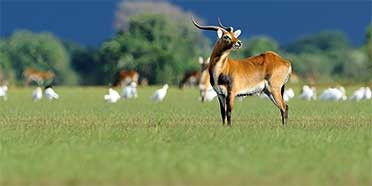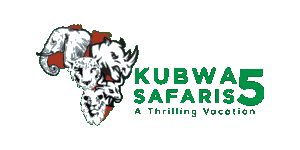
Safari Tours to Bangweulu Wetlands
-
![21-Day Ngonye Liuwa Plain, Kafue, South Luangwa Tour]()
21-Day Ngonye Liuwa Plain, Kafue, South Luangwa Tour
$14,410 to $14,630 pp (USD)
Zambia: Private tour
Mid-range Camping & LodgeYou Visit: Livingstone (Start), Mosi-oa-Tunya NP, Victoria Falls, Ngonye Falls (Highlight), Liuwa Plain NP, Barotse Floodplain, Kafue NP, Lochinvar NP, Lusaka (City), South Luangwa NP, Luambe NP, North Luangwa NP, Mutinondo Wilderness, Bangweulu Wetlands, Kasanka NP, Kundalila Falls (Highlight), Lusaka (End)

Kubwa Five Safaris
4.9/5 – 148 Reviews
-
![15-Day Zambia Walking Safari with Bat Migration]()
15-Day Zambia Walking Safari with Bat Migration
$3,730 pp (USD)
Scheduled Start DatesZambia: Shared tour (max 10 people per vehicle)BudgetCamping & Lodge
You Visit: Mfuwe (Start), South Luangwa NP, North Luangwa NP, Mutinondo Wilderness, Bangweulu Wetlands, Kasanka NP, Kundalila Falls (Highlight), Lusaka Airport (End)

Adventure Purists
4.8/5 – 15 Reviews
-
![15-Day Walking Safari Zambia]()
15-Day Walking Safari Zambia
$3,834 pp (USD)
Scheduled Start DatesZambia: Shared tour (max 10 people per vehicle)BudgetCamping & Lodge
You Visit: Mfuwe (Start), South Luangwa NP, North Luangwa NP, Kapishya Hot Springs (Highlight), Mutinondo Wilderness, Bangweulu Wetlands, Mkushi (Town), Lusaka Airport (End)

Adventure Purists
4.8/5 – 15 Reviews

 Zambia Parks
Zambia Parks





